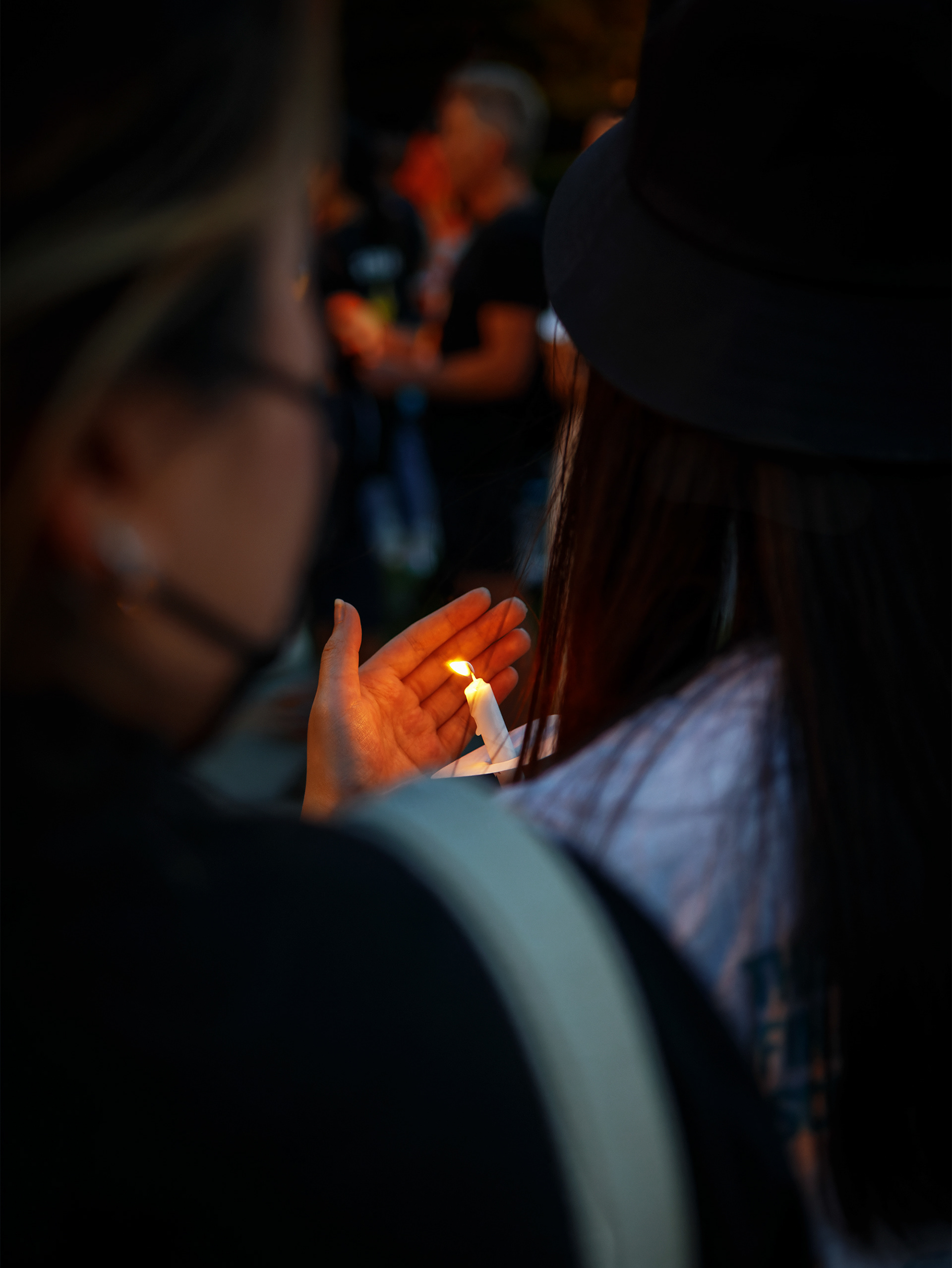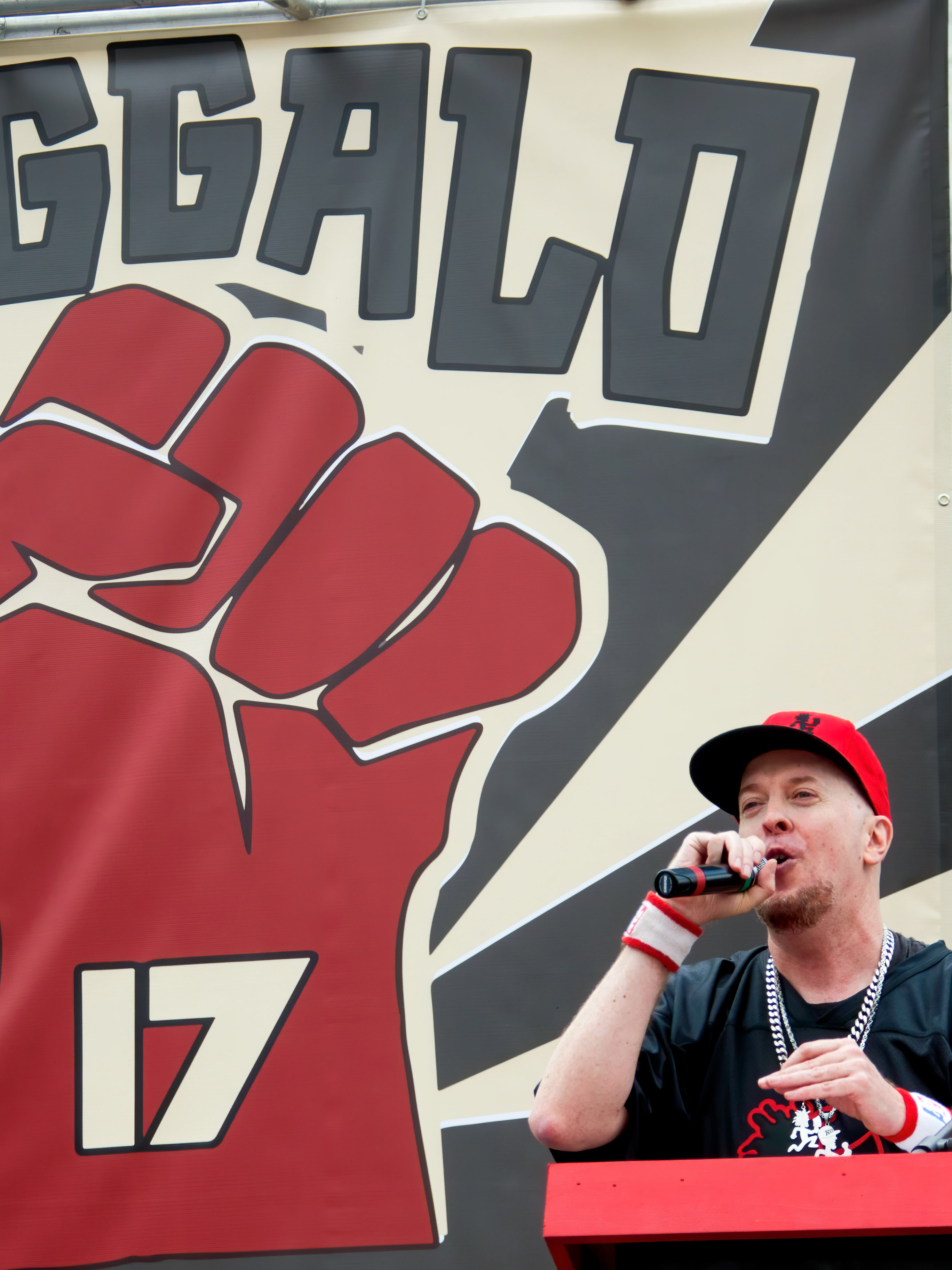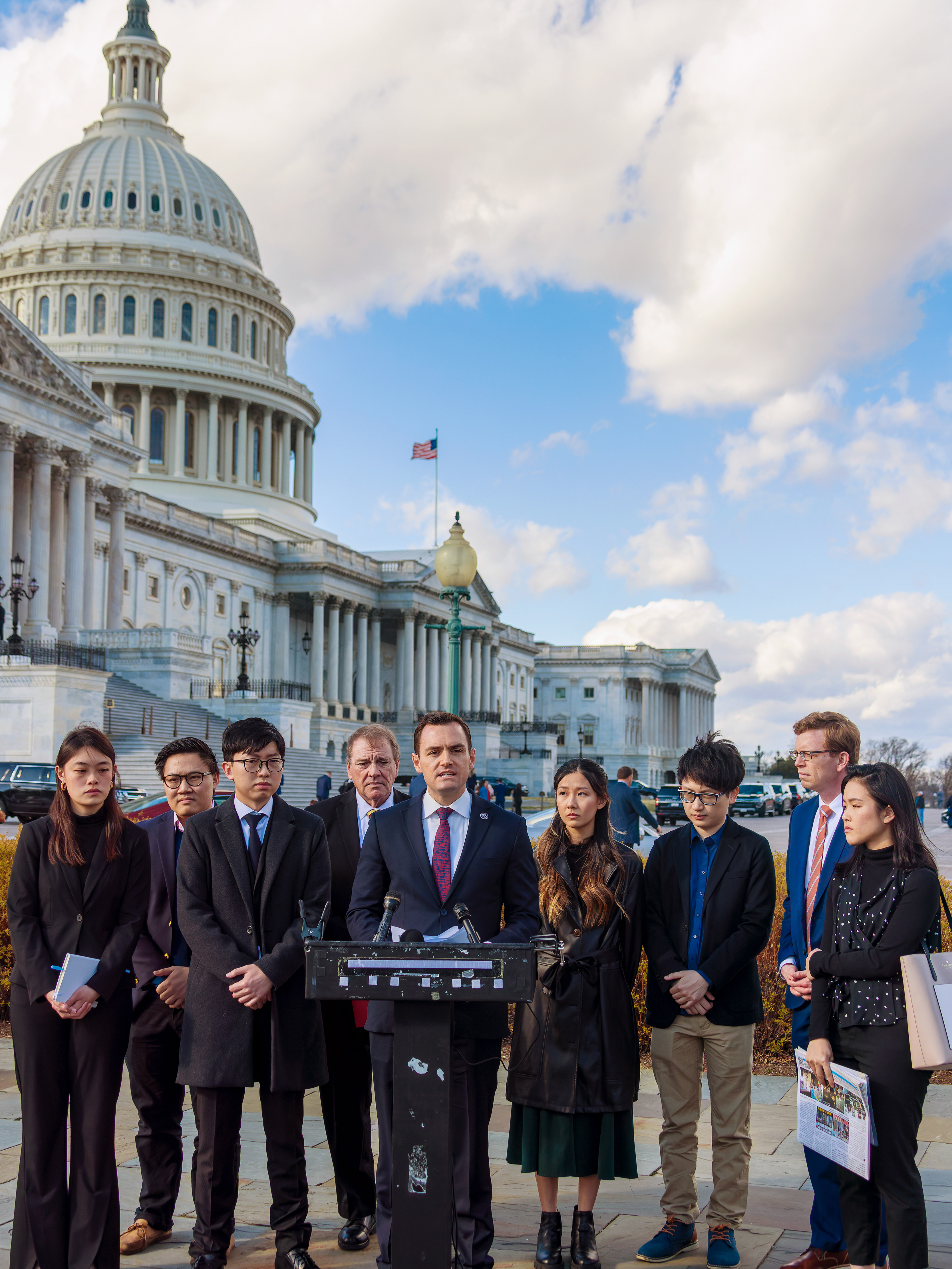This photographic essay visually interrogates Hongkongers’ commemoration of the 30th anniversary of the Tianamen Square Massacre by Chinese authorities on 4 June 1989 – the only city “in China” that can. It illustrates how, despite Chinese authorities’ decades long censorship and efforts to render the criminal tragedy invisible, Hong Kong has – through institutions such as its recently re-established 4 June Museum and its annual candlelight vigils – endeavored to keep its memory alive for the present, and future generations. The essay also examines the performative visual storytelling inscribed on Hong Kong’s streets and urban terrain by performance artists and protest artefacts invoking the iconography of the “Remember Tiananmen/8964” movement such as the “Tank Man.”
Hong Kong's 4 June Museum
Entrance to the world’s only museum dedicated to the preserving the memory of the June 4th Massacre in Tiananmen Square in 1989. Operated by the Hong Kong Alliance in Support of Patriotic Democratic Movements in China, the June 4 Museum re-opened in April 2019 in time for the 30th anniversary of the bloody crackdown following a three-year hiatus after having been forced out of its previous location. Hong Kong, under a separate system than mainland China, remains the only city in communist state that can hold observances of the incident.
“Don’t forget Tiananmen”
Visitors to Hong Kong’s 4 June Museum watch a documentary on the Chinese regime’s massacre of student demonstrators ahead of the 30th anniversary of a military crackdown on the pro-democracy movement in 1989. Heavily censored and systematically erased from the public sphere by Chinese authorities on the mainland, commemorations and discussions of the movement and its violent repression remain sensitive as are images like the iconic “Tank Man” standing down a column of People’s Liberation Army tanks. Every year since the incident, Hong Kong – under a different system than the People’s Republic of China – has held memorial observances and iconic candlelight vigils calling for justice for the victims, and reversal of the Communist Party’s declaration that the student movement and its supporters were counterrevolutionaries. The 4 June Museum, an educational resource, is the only institution dedicated to preserving the memory of the tragedy so that the world will not forget Tiananmen.
Learning About 4 June
Ahead of the 30th anniversary of the Tiananmen Square massacre, a young visitor to Hong Kong’s 4 June Museum learns about the events, figures and history of communist China’s military crackdown on student demonstrators in 1989. Located in the Mong Kok district and operated by the Hong Kong Alliance in Support of Patriotic Democratic Movements in China, the Museum is the only institution in the world dedicated to preserving the memory of the June 4th Massacre. Three decades after the repression, commemorations and discussions of the incident remain heavily censored in China. Recently, Special Administrative Region authorities and pro-communist forces in the city have similarly called for banning of the city’s iconic 4 June candlelight vigils – which have been held every year since the incident – as “subversive” and “unpatriotic.” As such, the 4 June Museum is seen as an important educational resource to inform the future generations about what happened in Tiananmen Square.
Thirty Years On, The Ghost of Tiananmen Haunts Hong Kong
Professor and performance artist Dr. Kacey Wong stages an art installation – The Loveliest Person – in Hong Kong’s bustling Causeway Bay entertainment district ahead of the 30th anniversary of the Tiananmen Square massacre. In this performance, kitted as a ghost of a People’s Liberation Army solider involved in the crackdown, and playing a funeral version of the Chinese national anthem and Frédéric Chopin’s Piano Sonata No.2, “Death” hauntingly stalks the pedestrian byways serenading the public including anti-extradition-to-China protesters and other artists performing 4 June, anti-Extradition Law Amendment Bill (ELAB), and free speech pieces. Wong’s demonstration denounced the “evils” of patriotism in the shadow of regime proposals to criminalize the derogatory, insulting, or satirical performance of the national anthem – the March of Volunteers. The proposed legislation, like the ELAB, would introduce communist legal and political norms in the city intended to silence dissent.
"You Will Not Pass"
Taking a moment from campaigning against the Hong Kong Special Administrative Region government’s feared proposed Extradition Law Amendment Bill (ELAB) in the bustling Causeway Bay entertainment district, pro-democracy activist and vice president of the People Power party, Tam Tak-chi, stares down the “ghost” of a People’s Liberation Army solider involved in the Tiananmen Square massacre ahead of the 30th anniversary of the 4 June crackdown. The ghostly “solider,” performed by professor and artist Dr. Kacey Wong, was part of an art installation were Wong hauntingly stalked the pedestrian byways serenading the public, including anti-extradition-to-China protesters and other artists performing 4 June, anti-ELAB, and free speech pieces, with a funeral version of the Chinese national anthem and Frédéric Chopin’s Piano Sonata No.2.
"The March of Death":
Tiananmen Thirty-years On
Tiananmen Thirty-years On
Ahead of the 30th anniversary of the Tiananmen Square massacre, professor and performance artist Dr. Kacey Wong – acting as a ghost of a People’s Liberation Army solider involved in the crackdown –hauntingly stalks the pedestrian byways of Hong Kong’s busy Causeway Bay entertainment district while serenading the public with a funeral version of the Chinese national anthem and Frédéric Chopin’s Piano Sonata No.2.
“Don’t Dare to Forget”
In Hong Kong’s bustling Causeway Bay entertainment district ahead of the 30th anniversary of the Tiananmen Massacre and annual candlelight vigil, a replica of a three-wheeled bicycle used in Beijing to ferry injured pro-democracy demonstrators shot by the People’s Liberation Army during the Communist Party’s crackdown on 4 June 1989, vividly manifests the sign’s charge to Chinese and Hongkongers: “Don’t dare to forget.” In the background, a ghostly Chinese soldier stalks the streets the district serenading the public with a funeral version of the Chinese national anthem and Frédéric Chopin’s Piano Sonata No.2 played on an accordion – an art installation, called The Loveliest Person, by renowned Hong Kong artist Dr. Kacey Wong. The city is the only place in China where commemorations and observances of the massacre can take place.
“Hong Kong Stands with The Egg”
Converging art installations in Hong Kong’s hopping entertainment district, Causeway Bay, ahead of the 30th anniversary of the Tiananmen Massacre and the annual 4 June candlelight vigil. A ghostly People’s Liberation Army soldier – performed by renowned artist Dr. Kacey Wong – involved in the 4 June bloodletting plays a funeral version of the Chinese national anthem and Frédéric Chopin’s Piano Sonata No.2 on an accordion as he approaches another performance artist enacting Haruki Murakami’s quote: “If there is a hard, high wall and an egg that breaks against it, no matter how right the wall or how wrong the egg, I will stand on the side of the egg.” Seemingly hiding an egg behind her back as the threatening apparition advances, the artist – representing Hong Kong – already stained with the “blood” of other eggs, defiantly stands with the unarmed citizens facing down the communist leviathan and its inhumane system.
“Remember Tiananmen”
Following Hong Kong’s candlelight vigil on the 30th anniversary of the Tiananmen Massacre, activists from Hong Kong’s pro-democracy Civil Human Rights Front (Figo Chan Ho-wun), the League of Social Democrats (Leung “Long Hair” Kwok-hung), and People Power (Tam Tak-chi) political parties lead an annual “unlawful procession” from Victoria Park to the Chinese Liaison Office in Sai Wan. Existing under a separate system than mainland, Hong Kong remains the only city in communist China that can hold observances of the incident. In recent years, however, Chinese and Special Administrative Region authorities and supporters have threatened to ban the commemorations by Hongkongers of the 4 June incident as subversive and unpatriotic. As such, embodied performances and speech by Hongkongers to “Remember Tiananmen 1989” now face their most severe threat from communist authorities since becoming a Special Administrative Region of China.
“Lest we forget”
Political sticker bearing the iconic image of “Tank Man” on a light pole in Hong Kong’s Causeway Bay entertainment district on the 30th anniversary of the Tiananmen Massacre enjoins Hongkongers to remember the 4 June Massacre. An insurgent form of political mobilization inscribing itself on the urban landscape of “Skyscraper City,” another sticker mobilizes Hongkongers to participate in an anti-extradition to China procession on 9 June.









